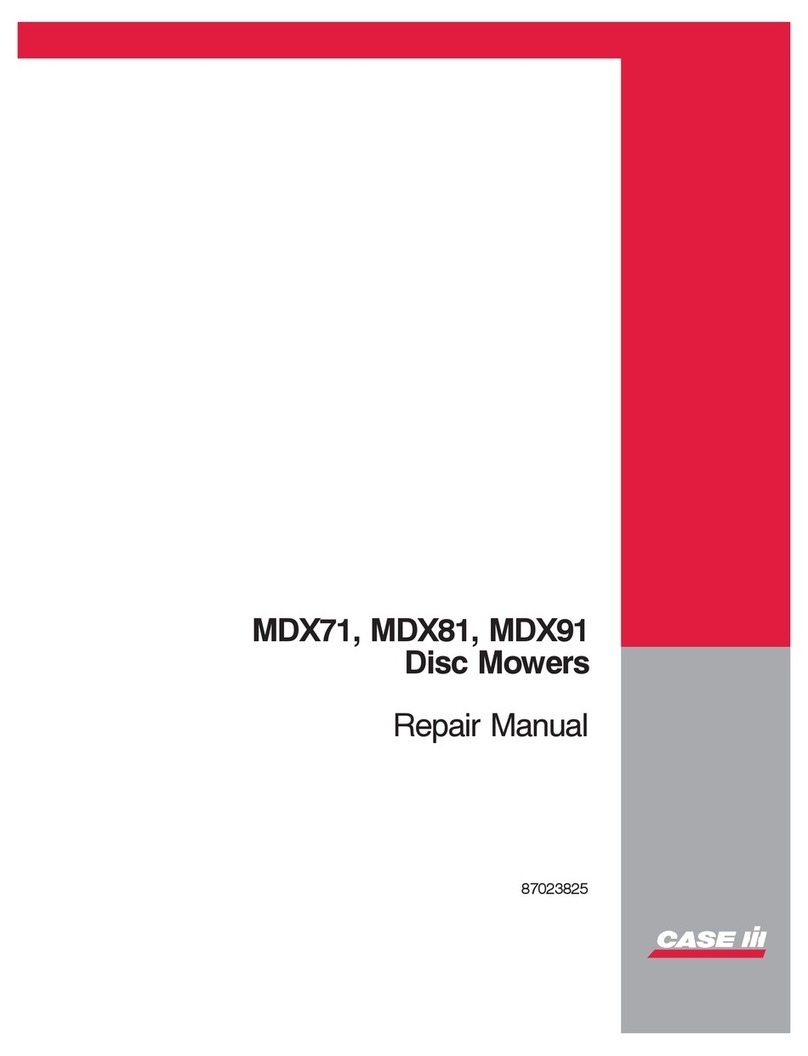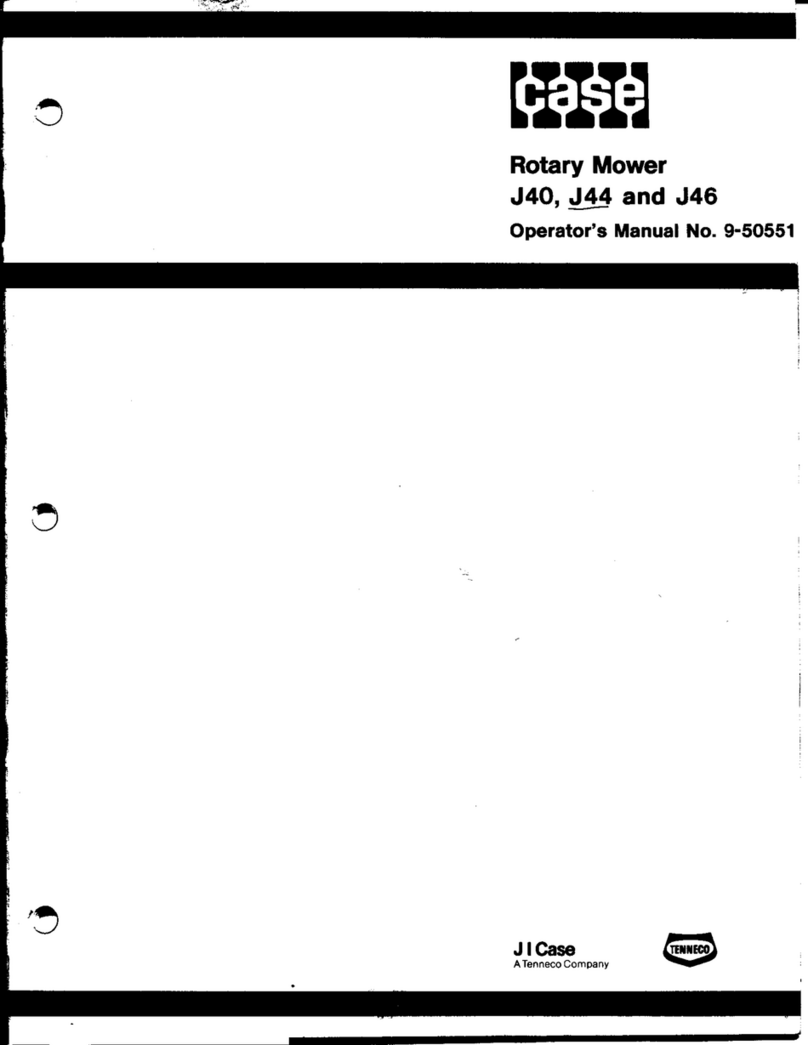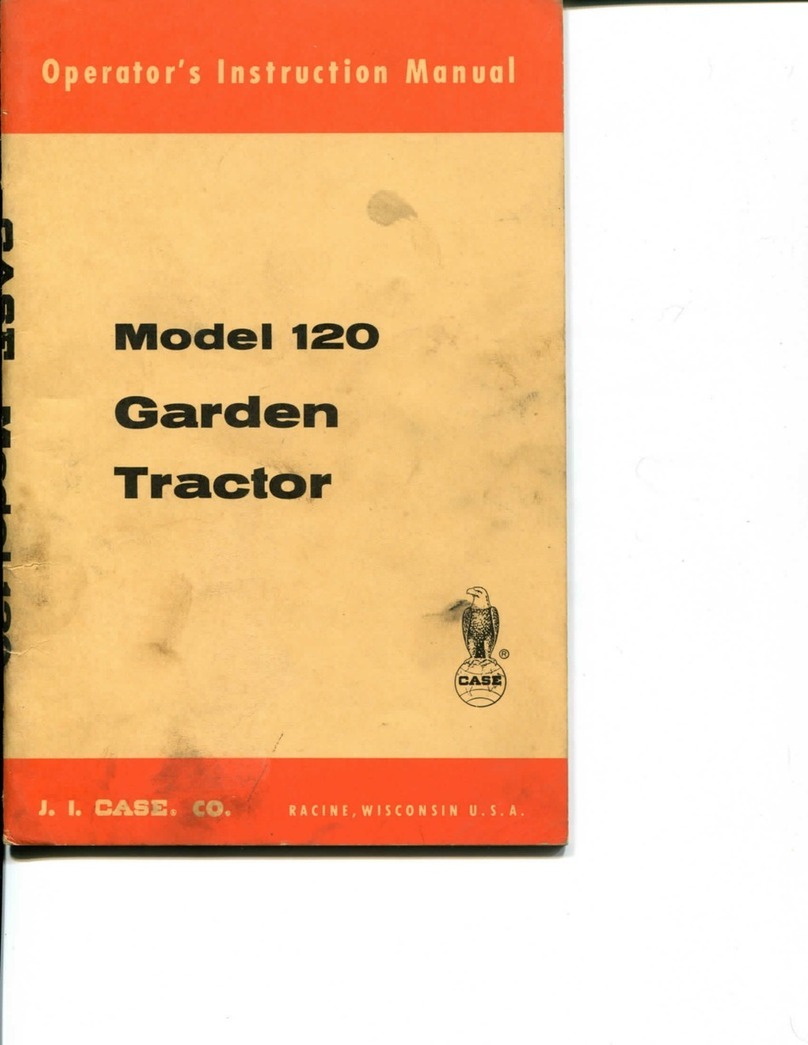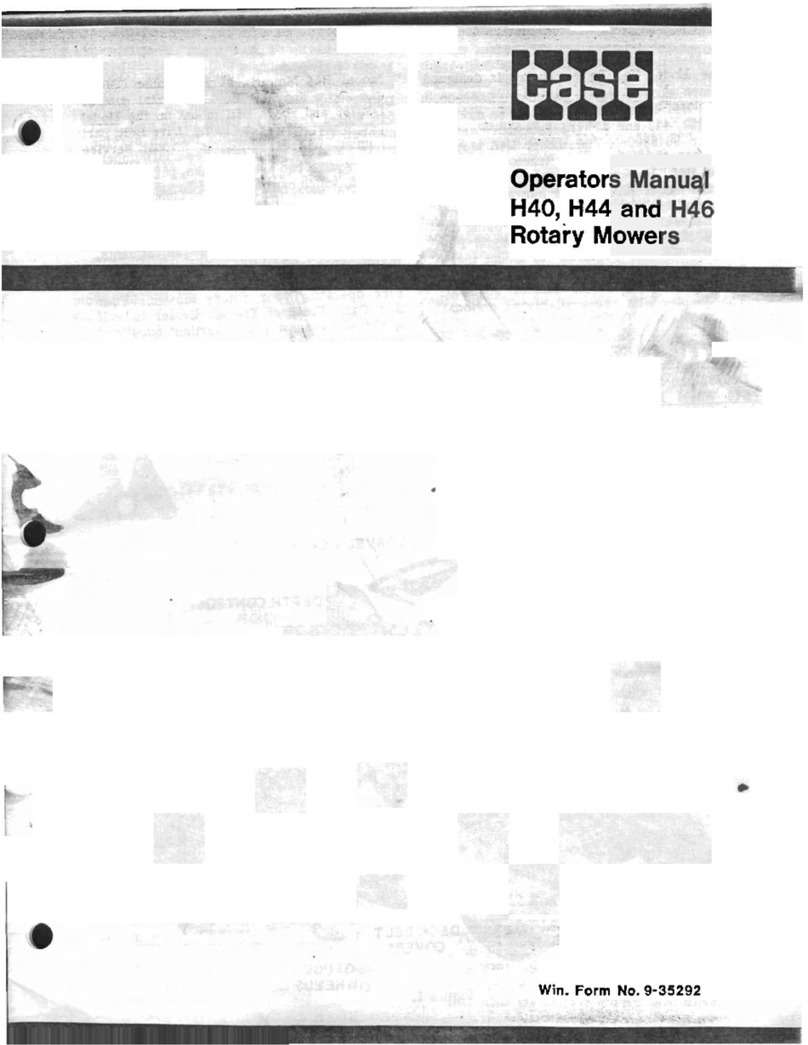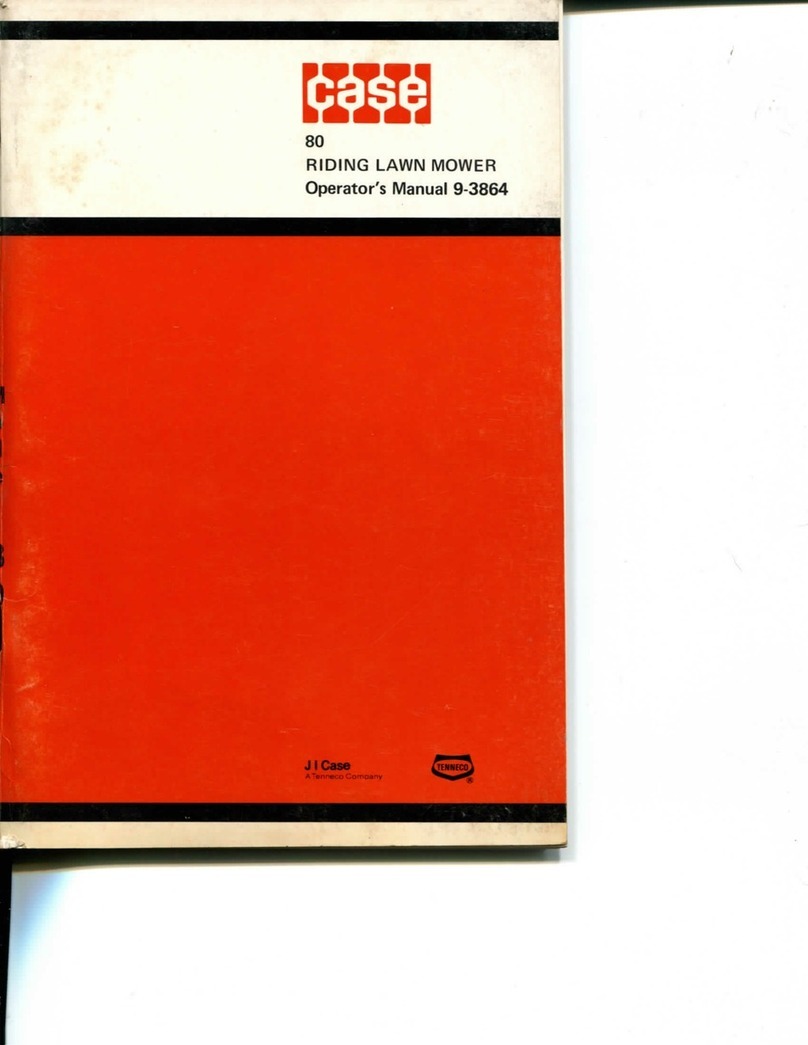INTRODUCTION
This manual contains recommended operating procedures,
safety rules, adjustments, maintenance
information,
assem-
blyand
mounting
instructions.
Read
this manual carefully
before operating
your
rotary
mower.
Your
-'
I
Case
Compact
Tractor
Dealer
is
well qualified
to
answer any
further
q.uestions
you
might
have
concerning
your
rotary
mower. Also,
if
the
need
should arise, his
Service Department
with
factory
trained technicians,
..
SPECIAL
INFORMATION
TRACTOR
MODEL
446
All
C 19652 special offset
lift
link
supplied
with
tractor
MOWER APPLICATION
CHART
MOWER
J-40
J-
44
J-46
MODEL
RECOMMENDED
TRACTOR
210, 220, 222
222, 224, 444, 446, 644,
224, 444, 446, 644, 646
MODEL
646
genuine
Case
replacement parts and the required facilities
is
in the position
to
provide proper repairs in the shortest
time
possible.
The
definitions
"Right,
Left,
Front,
and Rear"
as
used
throughout
this manual relate
to
the
tractor
and
rotary
mower
as
the operator
is
seated facing forward in the
normal operating position
of
the tractor.
FOR
INSTALLATION
ON
PRIOR MODEL TRACTORS
TRACTOR
MODEL
USE
KIT
220, 222
prior
to
SIN
9646800
H-
38
442, 444
prior
to
SIN
9646800
H-39
BELT APPLICATIOI\I
CHART
TRACTOR
MODEL
210
All
220 Prior
to
SIN 9656747
220
SIN 9656747 and after
222 PRIOR
TO
SIN 9658189
222 SIN 9658189 and
after
224AII
442
All
444
Prior
to
SIN 9661261
444 SIN 9661261 and after
446
All
-..
644 Prior
to
SIN
9698343
644 SIN
9698343
and after
646
All
* Belt shipped
with
loader
tractor
BELT
PART
NUMBER
C23358
C23807
C23358
C23807
C23358
C23358
C23809
C23809
C23359
C23J59
; C238
07
C23810-
C23808*
NOTE: Part numbers
are
subject
to
change
without
notice. Contact
your
J I
Case
Compact Tractor Dealer.
7









